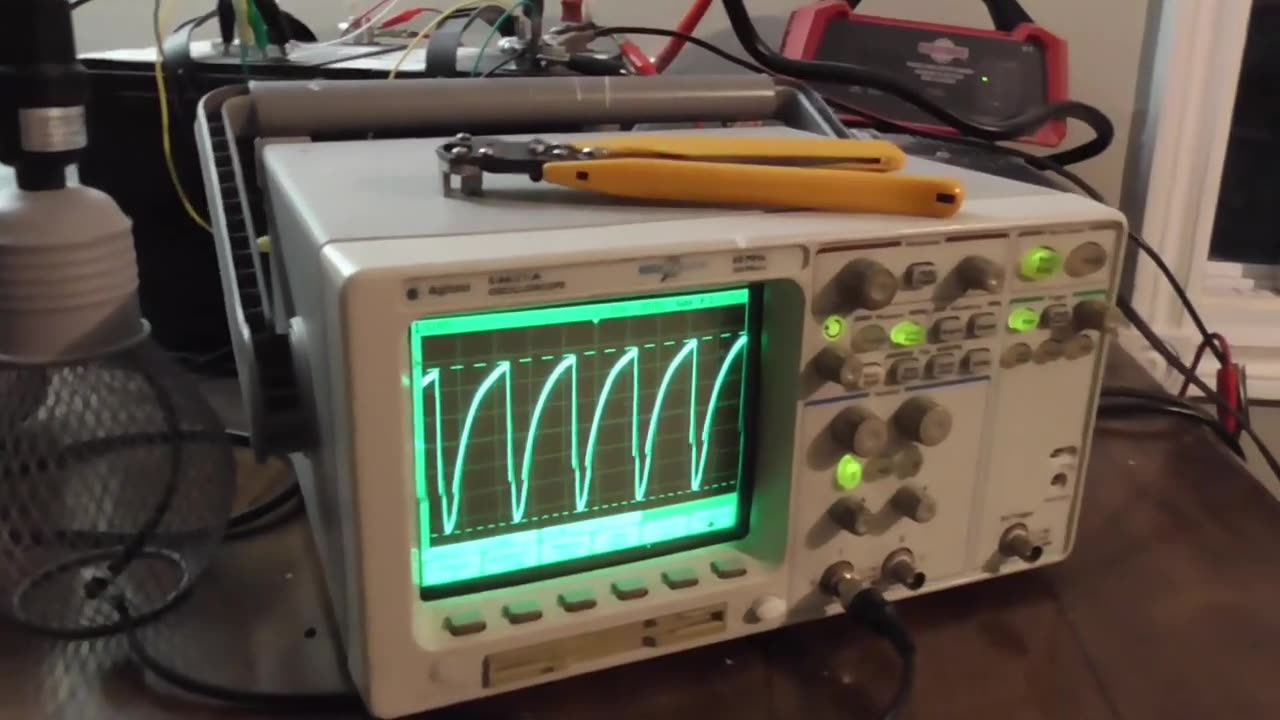Premium Only Content

Hybrid Galvanic Capacitor
Building a Self-Powered Hybrid Galvanic Cell Capacitor
Introduction:
In this video, I show the process of building a self-powered hybrid galvanic cell capacitor from scratch. The hybrid galvanic cell capacitor combines various systems and theories to create a unique feature of continuously raising voltage. We'll discuss the components and the theory behind the project and explore how the galvanic cell triggers the oscillator box and causes the capacitor to self-oscillate. This will charge a 12 volt car battery in a few days!
Components:
The hybrid galvanic cell capacitor comprises several components, including a galvanic cell, an oscillator box, a built-in capacitor, and an additional induction coil. The galvanic cell offers about two volts DC that the oscillator box uses to self-oscillate. The built-in capacitor is in line with the oscillator, causing it to self-oscillate at around 20 Hertz at around 30 plus volts. The capacitor continuously charges at this rate.
Theory:
The unique feature of the hybrid galvanic cell capacitor is the continuously raising voltage. The galvanic cell triggers the oscillator box, causing the capacitor to self-oscillate. The capacitor then charges and builds up in amplitudes, increasing instead of decreasing every few minutes. The capacitor continually raises the voltage until it reaches its maximum voltage capacity, less it's loaded down.
The addition of an induction coil around the capacitor taps into that extra energy and potentially powers other loads. The hybrid galvanic cell capacitor continuously raises the voltage and is completely self-powered.
Conclusion:
Building a self-powered hybrid galvanic cell capacitor is a fascinating project that combines various systems and theories. The capacitor's unique feature of continuously raising voltage is achieved by triggering the oscillator box and allowing the capacitor to self-oscillate. The addition of an induction coil around the capacitor provides an extra source of energy that can potentially power other loads. This project shows how experimentation and exploration can lead to exciting and innovative discoveries.
Based on my analysis, it seems that the slow gain in voltage is primarily due to a strict slow electron flow within the system. The electron flow through the water conductance from one of the capacitor plates jumps into the galvanic cell plate and appears to change the electron count, thereby acting as a hybrid capacitor and a passive electron accumulator This explains the slow movement of electrons as single units in a circuit, supporting the idea that the galvanic cell acts as an electron accumulator, capturing electrons built up from the capacitor plate.
While direct induction or capacitance may not be the dominant factors in this feedback process, the concept remains fascinating. Further study and research in this area could help shed more light on the underlying mechanisms and potentially lead to enhanced developments in the field.
Forum: http://typeright.social/forum
Please Help Support My Research: https://youtu.be/pYXETBB40j0
-
 11:21
11:21
Joel Lagace
10 months ago $0.11 earnedReactive Over Unity
1921 -
 2:15:10
2:15:10
TimcastIRL
9 hours agoTrump Admin Hints At CRIMINAL CHARGES For Fauci In BOMBSHELL Report w/Angry Cops | Timcast IRL
178K155 -
 DVR
DVR
SpartakusLIVE
11 hours agoDuos w/ GloryJean || Friday Night HYPE w/ The MACHINE
38K1 -
 3:47:23
3:47:23
Nerdrotic
14 hours ago $33.86 earnedFantastic 4 HER! Daredevil BORE Again SUCKS! Disney Star Wars is DESPERATE | FNT Vegas 350
149K27 -
 5:21:14
5:21:14
MyronGainesX
1 day ago $23.51 earnedFormer Fed Explains FSU Shooting, Charlie Kirk vs Groyper Debate!
104K41 -
 1:03:22
1:03:22
IsaacButterfield
11 hours ago $4.12 earnedKaty Perry in Space?! Trans Women Law Controversy & Lizzo's Weight Loss Shocks Fans!
45.9K7 -
 6:15:39
6:15:39
Sm0k3m
8 hours agogaming night
40.1K1 -
 3:48:35
3:48:35
I_Came_With_Fire_Podcast
16 hours agoHOUTHIS & CHINA | MURDERER MERCH STORE | TRUMP SICK OF WAITING
47.7K9 -
 1:09:15
1:09:15
Keepslidin
7 hours ago $0.93 earnedIRL GAMBLING & GIVING PEOPLE MONEY WHEN THEY WIN
26.1K5 -
 6:10:30
6:10:30
Eternal_Spartan
17 hours agoLive at 9pm Central | Halo 3 & Halo Firefight! Come Hang out with a USMC Vet and join the best chat!
27.7K